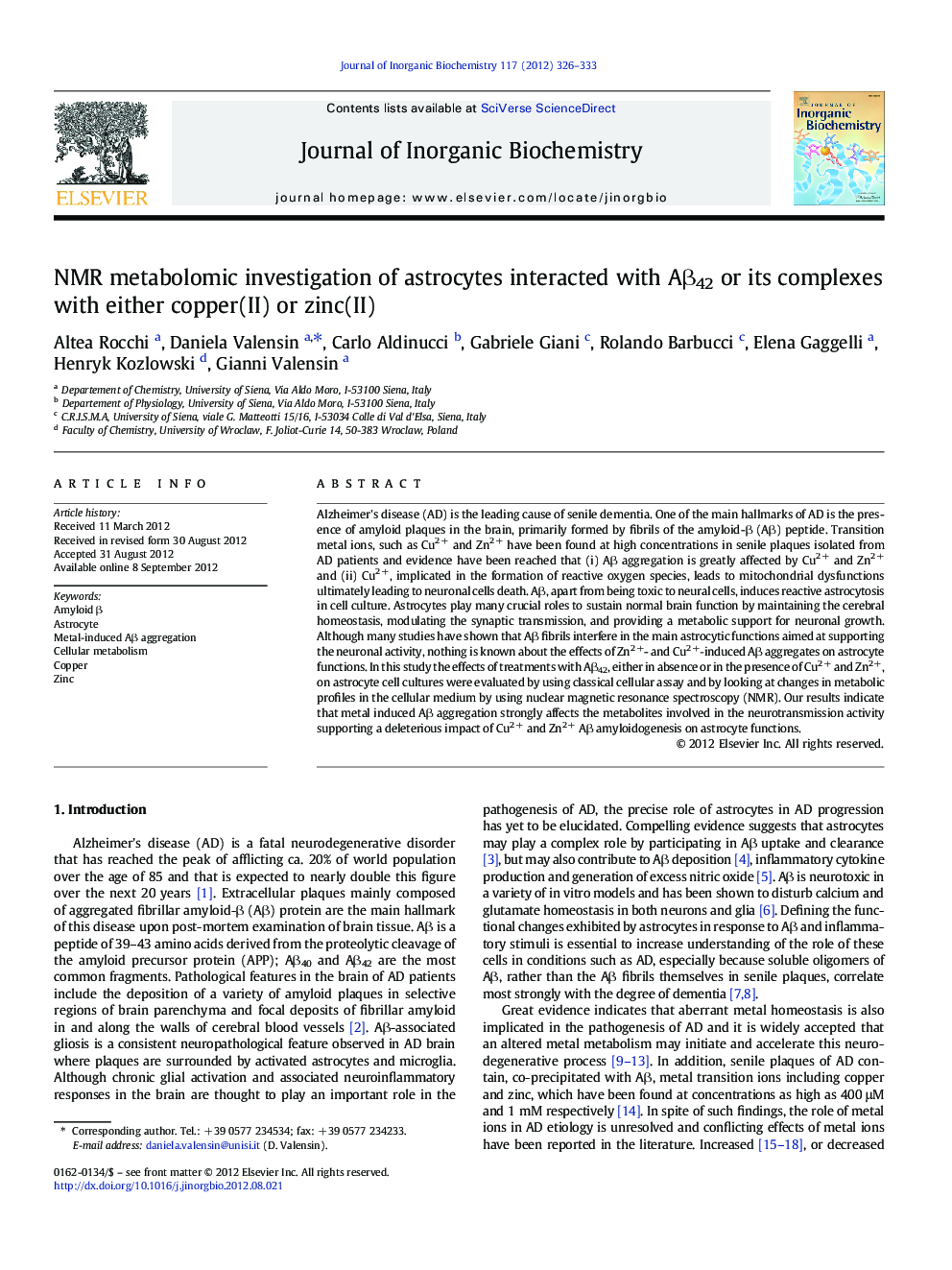| Article ID | Journal | Published Year | Pages | File Type |
|---|---|---|---|---|
| 1317736 | Journal of Inorganic Biochemistry | 2012 | 8 Pages |
Alzheimer's disease (AD) is the leading cause of senile dementia. One of the main hallmarks of AD is the presence of amyloid plaques in the brain, primarily formed by fibrils of the amyloid-β (Aβ) peptide. Transition metal ions, such as Cu2 + and Zn2 + have been found at high concentrations in senile plaques isolated from AD patients and evidence have been reached that (i) Aβ aggregation is greatly affected by Cu2 + and Zn2 + and (ii) Cu2 +, implicated in the formation of reactive oxygen species, leads to mitochondrial dysfunctions ultimately leading to neuronal cells death. Aβ, apart from being toxic to neural cells, induces reactive astrocytosis in cell culture. Astrocytes play many crucial roles to sustain normal brain function by maintaining the cerebral homeostasis, modulating the synaptic transmission, and providing a metabolic support for neuronal growth. Although many studies have shown that Aβ fibrils interfere in the main astrocytic functions aimed at supporting the neuronal activity, nothing is known about the effects of Zn2 +- and Cu2 +‐induced Aβ aggregates on astrocyte functions. In this study the effects of treatments with Aβ42, either in absence or in the presence of Cu2 + and Zn2 +, on astrocyte cell cultures were evaluated by using classical cellular assay and by looking at changes in metabolic profiles in the cellular medium by using nuclear magnetic resonance spectroscopy (NMR). Our results indicate that metal induced Aβ aggregation strongly affects the metabolites involved in the neurotransmission activity supporting a deleterious impact of Cu2 + and Zn2 + Aβ amyloidogenesis on astrocyte functions.
Graphical abstractAβ fibrils and aggregates induced by Cu2 + and Zn2 + metal ions yield changes on astrocytes metabolic profiles mainly affecting brain energetic and neuronal activity.Figure optionsDownload full-size imageDownload as PowerPoint slide
